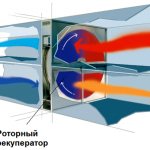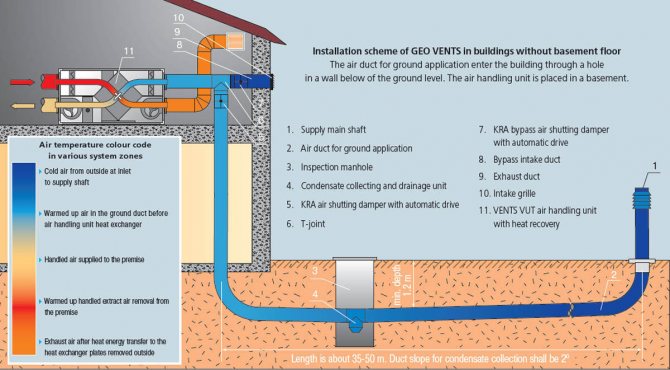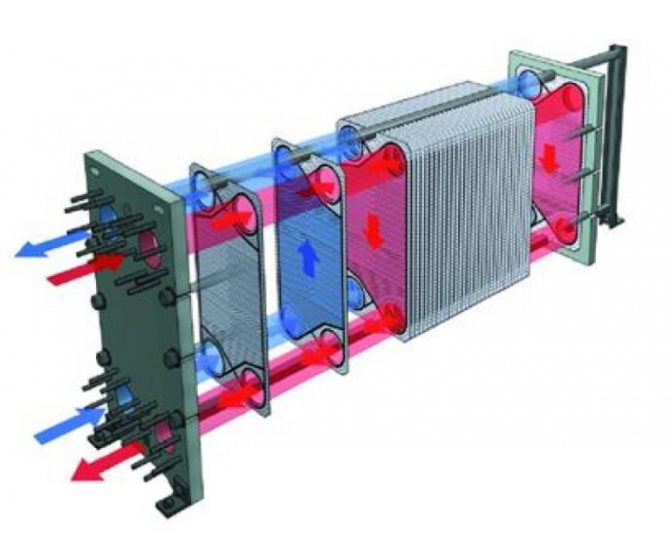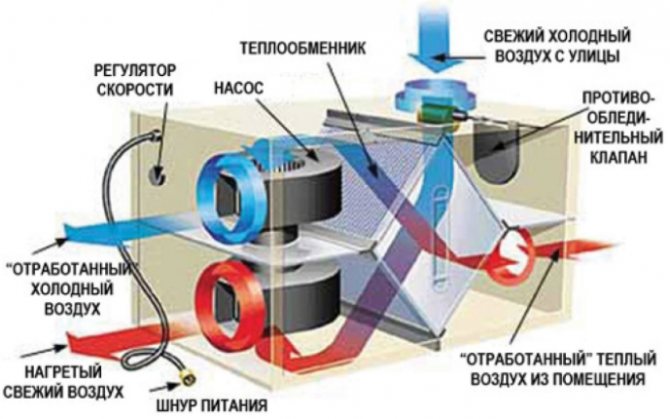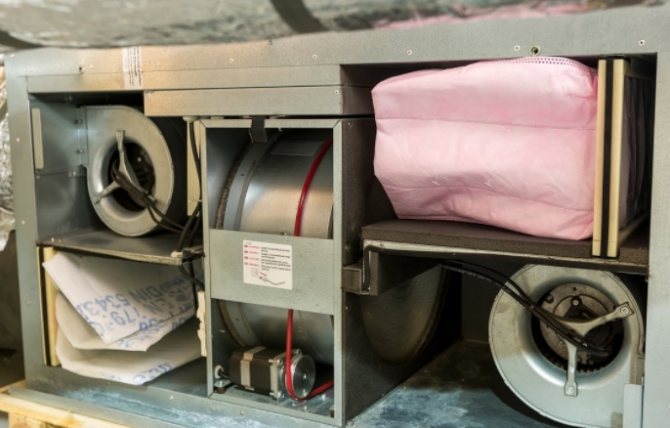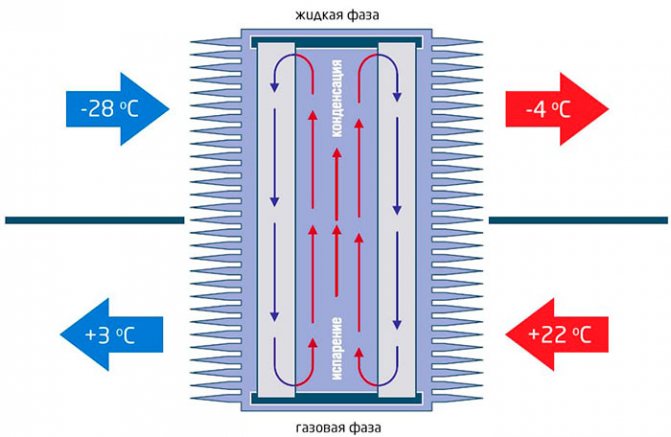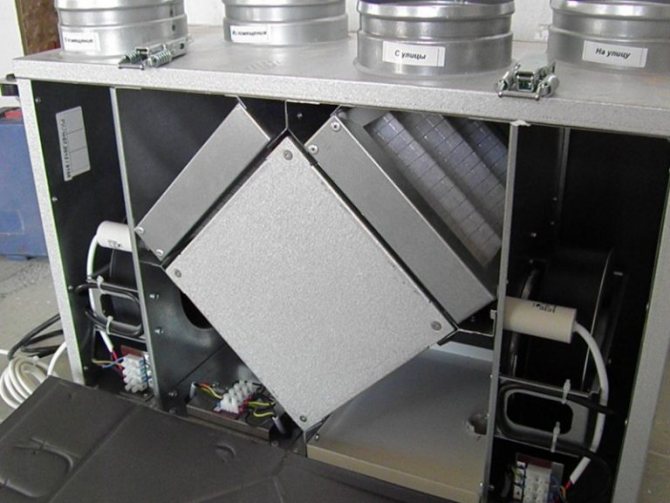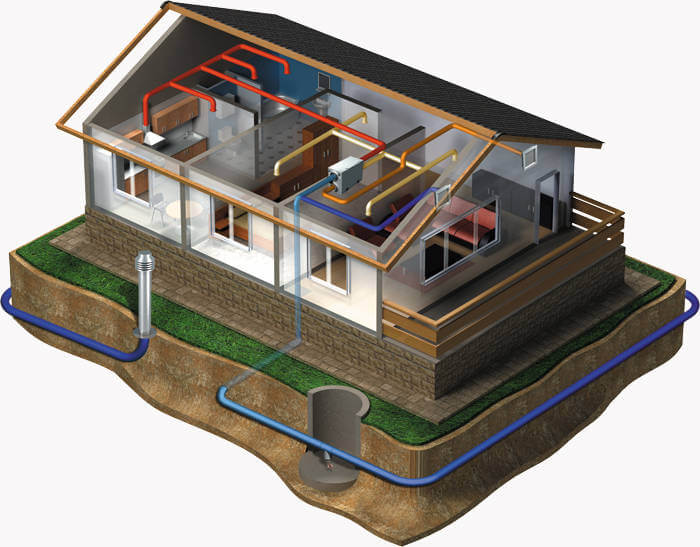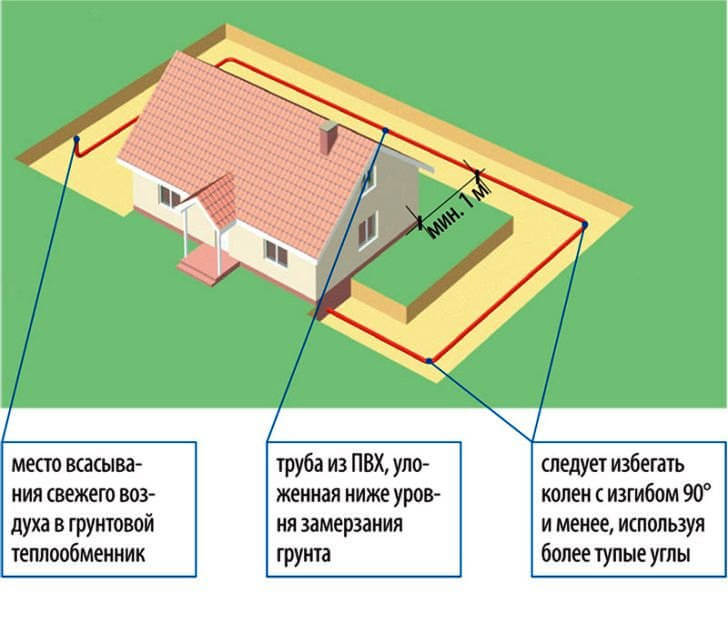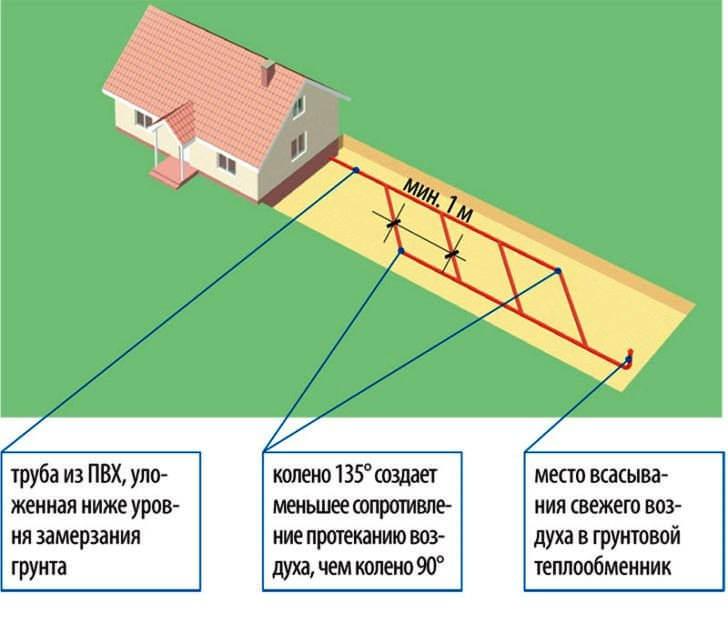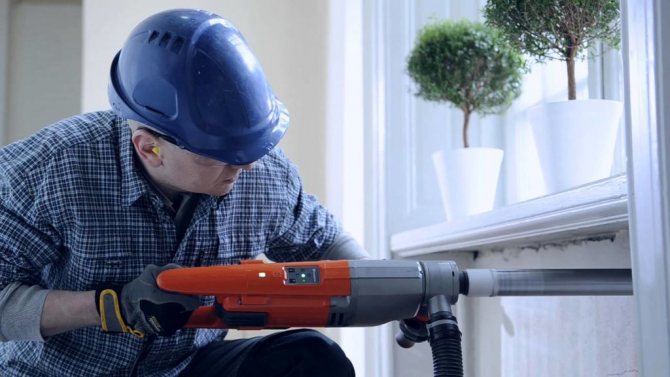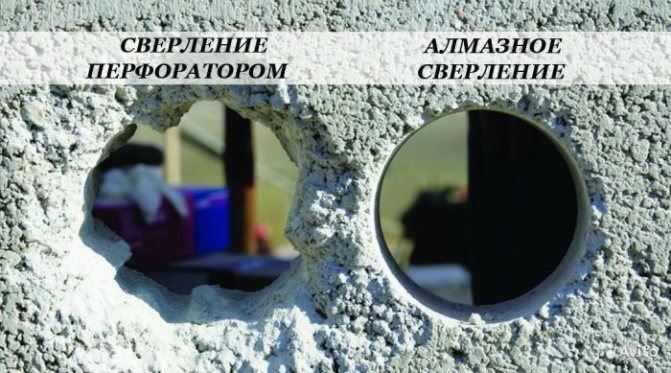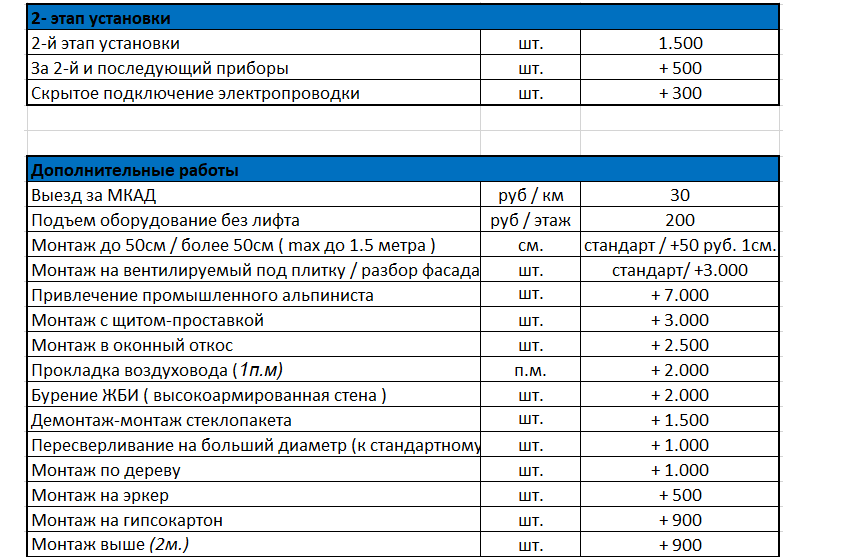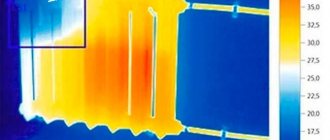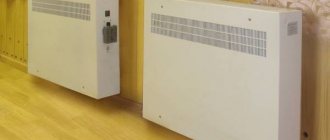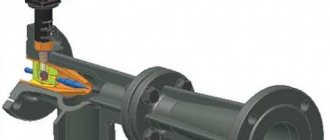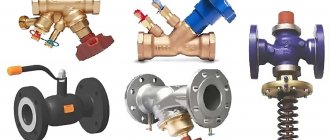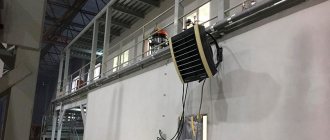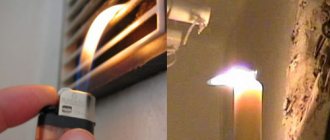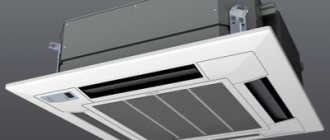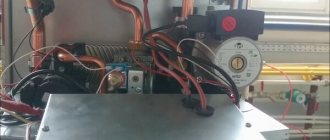In the process of ventilation, not only the exhaust air is utilized from the room, but also part of the thermal energy. In winter, this leads to an increase in energy bills.
Heat recovery in ventilation systems of centralized and local type will allow to reduce unjustified costs, not to the detriment of air exchange. Different types of heat exchangers are used for heat energy recovery - recuperators.
The article describes in detail the models of units, their design features, operating principles, advantages and disadvantages. The information provided will help in choosing the best option for arranging a ventilation system.
Types of heat recovery units
Heat recovery in the supply ventilation system is a relatively new phenomenon and is not yet widespread. There are several types of devices and a large selection of models for each type. Supply and exhaust ventilation with air heating and recuperation performs the following functions:
- Heat recovery;
- Fuel economy;
- Reducing the cost of equipment;
- Ensuring environmental standards;
- Reducing transportation costs;
- Reducing the cost of gas cleaning;
- Reducing the cost of the heating system.
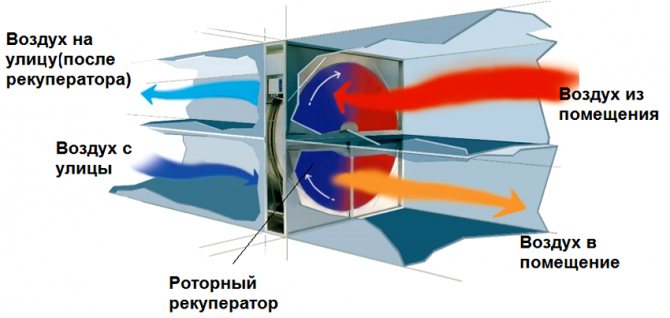
Rotary (drum)
The heat exchanger is suitable for areas with harsh climates. The drum is made of aluminum foil. By progressive movements, the heat is transferred from the extracted air to the supplied air:
- Heat is transferred to the supplied air;
- Mixing of streams is less than 0.1%;
- Warm and humidified air returns.
Rooms dry out less. The net power is 92%.
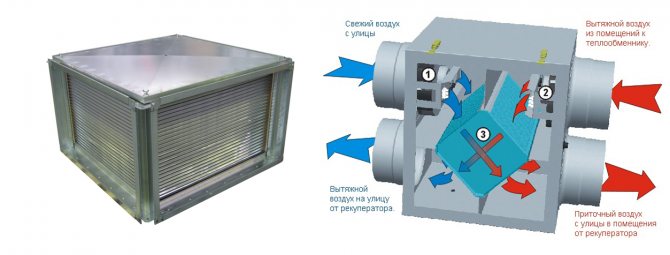

Lamellar cross recuperator
Designed for areas with mild weather conditions. The counter currents of the plate recuperator are separated by aluminum foil.
- Heat is transferred to the supplied air;
- Condensation is forming;
- Water drainage required.
The heat of the exhaust air through the aluminum plates heats the supplied air. Moisture condenses on the plates of the heat exchanger, which comes from the premises.
During warming up, the efficiency of the heat exchanger is zero, heat recovery does not occur. The overall efficiency of the air handling unit drops. The system recovers up to 95% of the heat.
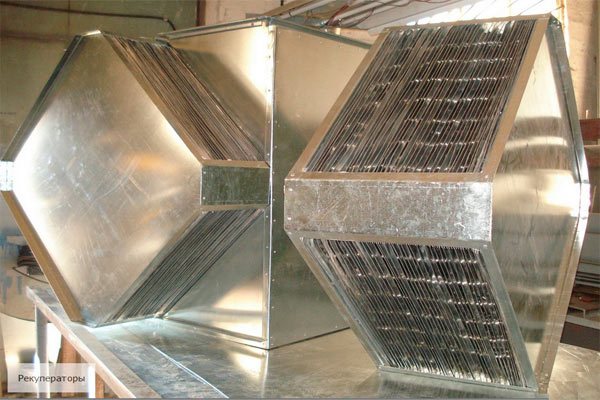

Heat pipes
This type is produced as a hermetically sealed tube from a material with good thermal conductivity. Freon is poured inside. The recuperator is placed vertically in the duct (it is permissible to install it at a small degree). The lower end is placed in the hood, the upper end in the supply ventilation.
Warm air flows through the lower duct at the bottom of the tube. Freon boils, vapors enter the upper part and meet the supply air, taking heat from the freon. The condensate settles to the bottom of the tube and the cycle repeats. Advantage: no moving parts. Disadvantage: poor performance, the system runs on freon.
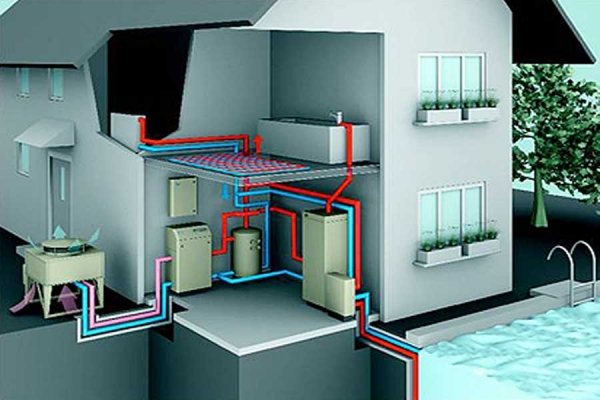

Intermediate heat carrier device
Water or a special solution is used as a heat carrier.
- Two heat exchangers are interconnected by pipelines;
- One of them is in the channel that draws air and receives heat;
- The heat passes through the coolant to the second heat exchanger, located in the supply air channel, where heating takes place.
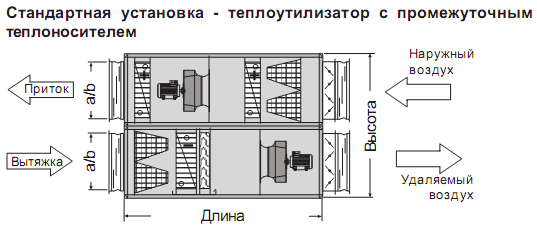

The streams do not mix with each other, but the intermediate heat carrier reduces the efficiency by up to 50%. Additionally, the efficiency can be increased with a pump.The advantage of intermediate heat transfer fluids is that the heat exchangers can be installed at a distance from each other. Installation is carried out vertically and horizontally.
Ground heat exchanger
The cost of operating the system is reduced by 5-10%. If there is no ground heat exchanger, the air entering the recuperation system enters directly from the street. A pipe is laid with a ground heat exchanger at a depth of about two meters in the ground. The air temperature below freezing of the soil always remains stable in the region of + 10 ° C.
The air travels through the pipe in the ground and enters the heat recovery. It is much easier to compensate for temperature differences. The heating elements turn on less often, the heat saving becomes greater.
The ground heat exchanger must be made according to the project. Depending on the area of the house, a recuperation system is selected, which takes a certain volume of air from the street and, passing it through the entire ground heat exchanger, heats it up. It is important to consult an experienced designer. It is he who will be able to calculate the length and depth of the channel.
Electrical devices
Electric air heaters for supply ventilation are very effective, but quite costly heating devices. The temperature rise in the ventilation duct is carried out as a result of air contact with hot spirals or plates made of refractory types of metals.
An increase in the temperature of the heating elements occurs due to a change in the electrical resistance of the heaters. This requires a lot of electrical energy.
The degree of heating of the coil or plate is directly proportional to the strength of the current that flows through the element. By increasing the voltage, you can reduce the amperage without changing the electrical power.
Advantages and disadvantages of electric heaters
Among the main advantages that characterize an electric air heater, it is worth highlighting the following.
Simple installation process. So, it is much easier to bring a cable to the heater than to circulate water or other coolant inside it.
You don't have to worry about insulating the wiring. The power loss in the cable due to electrical resistance is much lower than the heat loss in any piping with a heat transfer fluid.
Easy adjustment of a suitable air temperature. To be able to set the temperature of the air supplied to the room at the required level, it is enough to install a simple temperature sensor in the power circuit of the heating device. In the case of a water heater, it will be necessary to coordinate the power of the boiler, the temperature of the coolant and air.
At the same time, the electrical type of devices also has its drawbacks. First of all, this is the cost of the device, which is higher in comparison with water analogues. So, in the case of approximately the same power level, the price of an electric heater will be approximately 2 times higher than a device with a liquid heat carrier.
Quite high energy costs. So, to provide heating of air in the ventilation system of even a small room, the cost of electricity will be significant.
Specifications to pay attention to when choosing
- Metal devices are effective in operation down to -10 ° C. At low temperatures, performance is noticeably reduced. As a result, electric pre-heating elements are used;
- When choosing, you should study the thickness of the case, the material of the cold bridges. The thickness of 3 cm is subject to additional insulation when the outside temperature drops below -5 ° C. You will have to double the use of insulating material if the frame is made of aluminum;
- Pay particular attention to the free flow values of the fans. It may happen that the head may be completely absent at 500 m3. Consumers find out about this, as a rule, when the recuperator fails;
- A big plus when additional functions can be connected to the automatic system. Thanks to improved automation, operating costs are reduced and the operation of the entire device is increased;
- The main indicator for deciding on which recuperator to choose is the ventilation pressure and power. A preliminary calculation is made of how much air should enter the house in one hour.


Manufacturing of a channelless heat exchanger
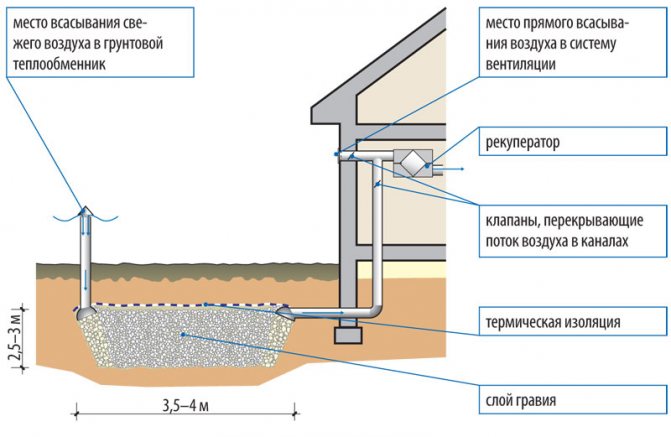

ductless ground heat exchanger
A channelless ground heat exchanger implies the manufacture of a pit with a length of about 3-4 meters and a depth of 80 centimeters. The pit is filled with a layer of gravel, and the top is covered with foam concrete. This design allows you to obtain a temperature inside a special layer, which will not differ from the temperature in the ground at a depth of 5 meters. After making the pit, you need to remove the pipe from it for the supply of fresh air.
This branch pipe is made according to the same scheme as in a tube heat exchanger. Another pipe should go from a special layer to the ventilation system of the premises. In a simple scheme, air begins to circulate. It is not only moisturized, but also cleansed. The advantage of the design is increased filtration. The downside is lower efficiency than in a pipe system.
Rooftop recuperators
These ventilation units are used in facilities with a large work space. They filter, heat and supply air to the building. The air temperature is regulated by a duct heater or cooler. Its inflow is carried out partially or in full through the plate structure of the recuperator.
Characteristic
Such supply and exhaust ventilation systems are installed on the roof ceilings of buildings through holes made in them. The recuperators extract the used air collected from the ceiling and release it into the atmosphere, and its heat is transferred to the powerful incoming jet. The air supply is directed directly to the ceiling or directed to the working area. The recuperator can be an integral unit in the overall ventilation scheme of the entire facility. The device is easy to operate.
Design
Models of units are made of different power, which is measured by the volume of passing air in cubic meters per hour. The base of the device is a frame-panel construction made of aluminum profiles. The optimum thickness of the heat exchanger sheets is about 0.2 mm. For sound and thermal insulation, the walls of the case are laid with mineral wool. Recuperators are equipped with electric, water and gas sections for heating. The achieved efficiency is about 65%. Installation of supply and exhaust ventilation does not cause any difficulties. To do this, it is necessary to make a window in the roof and strengthen the structure - "glass" for the correct distribution of the load. Installing the recuperator on the roof does not take up the useful volume of the building.
Principle of operation and design features
Universal devices operating on water are installed in places with a well-established heat supply system. A simple but quite effective design solution allows you to heat the air in the range from + 70 ° C to + 100 ° C and is relevant for hangars, gyms, supermarkets, greenhouses, warehouses, large pavilions - that is, large rooms that require additional heating.
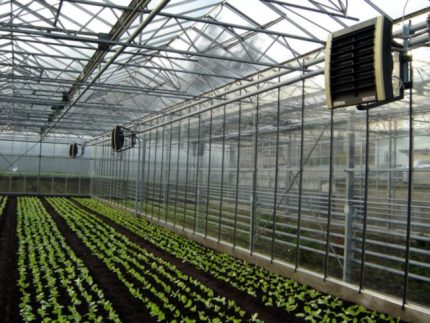

An example of using a VOLCANO air heater in a greenhouse. Heating is carried out due to the distribution of warm air (water temperature - + 90 ° C) using a fan and adjustable blinds
If you have ever used a household heat exchanger, you will easily understand the principle of operation of a water device. It also heats the air, but the role of an electric spiral enclosed in a small case is played by a set of metal tubes through which the heated coolant circulates.
The heating process is as follows:
- hot water heated to the required temperature (on average from + 80 ° C to + 180 ° C) from the heating pipes enters the heat exchanger, consisting of small aluminum, steel, bimetallic or copper pipes;
- the tubes heat the air passing through the device;
- the built-in fan circulates the heated air throughout the room and stimulates its movement in the opposite direction - to the device.
There is no need to specially heat the water, since it is part of the heating system, so there is a significant cost savings.
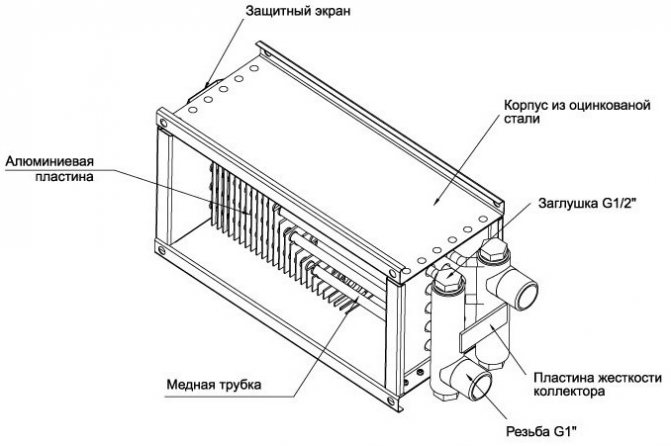

Construction of a water duct heater type 60-35-2 made of galvanized steel, intended for ventilation and air conditioning systems. Typical duct size - 60 cm x 35 cm, rows - 2, maximum working pressure - 1.5 MPa, maximum coolant temperature - + 170 ºС
A standard water heater circuit is a hybrid of a heat exchanger, fan and convector. It is effective for heating large industrial premises, and when choosing the right piping - for cottages with a well-established ventilation system.
Recuperator with water circulation
Characteristic
The thermal energy carrier is water or antifreeze supplied to the supply unit from a separately located exhaust heat exchanger. The operation of a water circulation recuperator is similar to that of a water heating. The efficiency of the action of the plate heat exchanger with water circulation reaches 50-65%. Supply and exhaust ventilation with recuperators of this type is rarely used when it is possible to assemble a heat exchange line. The operation of this system requires frequent monitoring. The weak point is the presence of a pump that circulates the heat exchanger. As well as additional nodes that regulate the operation of the system. They increase energy consumption. With a large distance between the supply and exhaust heat exchangers, it is impractical to use this option. The recuperator performs only the function of heat exchange without moisture transformation.
Design
The main units of the supply and exhaust ventilation system with heat recovery are two heat exchangers. They are installed separately in the supply and extract air ducts. Connect them with an insulated flexible pipe. It allows for an easier choice of the location of the nodes and the installation of the system. The recuperator with water circulation is equipped with a pump, expansion tank, controller, pressure indicator. Temperature sensors. Air, safety and control valves. When installing a single recuperation system, it is possible to connect several heat carriers. Different air exhaust and air flow paths ensure that the recuperator operates without the formation of traces of icing. The transfer of contaminants by the outgoing air to the inlet stream is excluded.
Intermediate carrier heat exchangers
The principle of operation of this device is practically similar to the operation of a plate recuperator. Here the heat exchanger is a closed loop made of a tube. It is constantly circulating water or water-glycol solution. The efficiency of heat transfer processes directly depends on the speed of circulation in a closed fluid circuit.
In such a device, mixing of air flows is completely excluded. The only disadvantages are insufficient efficiency. Such a device is capable of returning about 50% of the heat taken from the room.
System installation problems
There are practically no potential problems associated with the use of such equipment.Some are decided by the manufacturer, others become a buyer's headache. The main problems include:
- Condensation formation. The laws of physics dictate that condensation occurs when high-temperature air passes through a cold, enclosed environment. If the ambient temperature is below freezing, then the fins will begin to freeze. All information provided in this paragraph defines a significant decrease in the efficiency of the device.
- Energy efficiency. All ventilation systems working in conjunction with the recuperator are energy dependent. The economic calculation carried out determines that only those recuperator models that will save more energy than spend will be useful.
- Payback period. As previously noted, the device is designed to save energy. An important determining factor is how many years it takes for the purchase and installation of recuperators to pay off. If the indicator under consideration exceeds the 10-year mark, then there is no point in the installation, since during this time other elements of the system will need to be replaced. If the calculations show that the payback period is 20 years, then the possibility of installing the device should not be considered.
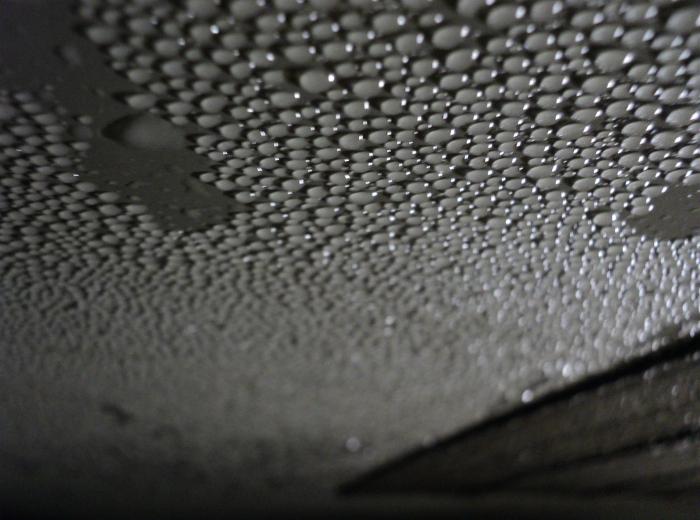

The above problems should be taken into account when choosing a heat exchanger, which there are several dozen types.
Types of ground heat exchangers
Today, two types are known:
- Channelless. An underground layer is used through which air passes for heat exchange.
- Pipe (channel). Here, heat exchange takes place using a set of pipes (channel) buried underground.
Regardless of the type, the main supply duct is mounted to the pipes of the ventilation system. Fresh air is supplied to it most often through a hole in the wall. An important point will be the installation of a mechanism with which it will be possible to switch between two positions: first - fresh air from the street enters the system, second - the soil system works. In simple words - you need to make a soil heat exchanger with your own hands with closing holes for air supply from the ground and from the street.

